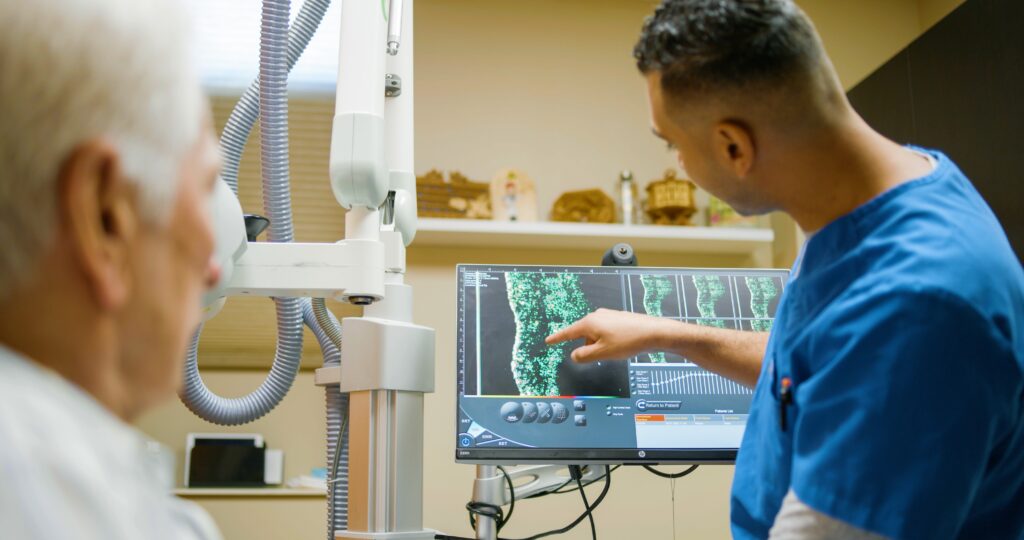The Dermatology Association of Radiation Therapy (DART) is urging dermatologists and other stakeholders to oppose a proposed policy that would cancel Medicare coverage for image-guided superficial radiation therapy (Image-Guided SRT or IGSRT) for the treatment of nonmelanoma skin cancer in seven states.
If approved, the proposed Local Coverage Determination (LCD), DL39808 “Superficial Radiation Therapy (SRT) for the Treatment of Nonmelanoma Skin Cancers (NMSC),” would affect residents in North and South Carolina, Virginia, West Virginia, Alabama, Georgia, and Tennessee.
“Image-guided SRT is growing fast and has been shown in strong research to be better than its predecessor when it comes to oncologic outcomes and patient satisfaction,” says DART President and Chairman Jacob Scott, MD, DPhil, DABR, also a radiation Oncologist at the Cleveland Clinic in Ohio, in an interview with the Dermatology Digest. “Across the board, it is a leap forward from its predecessor, superficial radiation therapy without ultrasound guidance.”
Image-guided SRT is about eight years old. “It allows all dermatologists to achieve skin cancer outcomes like MOHS surgeons do for the first time ever,” he explains, adding that a number of Mohs surgeons offer IGSRT as part of their treatment armamentaria. So far, uptake of the technology has been steady and rapid among dermatologists, he says. Membership in DART is also growing alongside the use of this technology.
This progress could fall by the wayside if payors pull back on reimbursements.
In a 19-page filing to Palmetto GBA, a South Carolina claims processing company working under contract to the Centers for Medicare & Medicaid Services to make coverage decisions in the Southeast United States, DART points out that, “in its current form, the LCD is fundamentally misdirected, misguided, and inappropriate. It would altogether remove any semblance of patient choice or physician clinical decision-making for patients who are diagnosed with NMSC. As IGSRT has increasingly become a common and widely utilized safe alternative to surgical excision and Mohs surgery, Palmetto must reverse its proposed course that would head off these advances in the nonsurgical treatment of NMSC.”
DART contends that the LCD’s scope is unclear, its references to SRT are misleading, and it fails to reflect several peer-reviewed journal articles and industry guidance supporting IGSRT as the nonsurgical standard of care and a first-line treatment option for NMSC. The proposed LCD was filed as a Medicare Part A policy, however, both SRT and IGSRT are almost exclusively provided by dermatologists in the office setting, meaning these services would fall under Medicare Part B. Palmetto also conflates IGSRT with SRT. IGSRT was developed from previous generations of SRT technology and is an entirely different treatment modality that has become the community standard of care for the nonsurgical treatment of NMSC and keloids in dermatologists’ offices, Dr. Scott says.
At least seven peer-reviewed studies illustrate the success rates associated with IGSRT as compared to non-image-guided SRT and Mohs surgery, he says.
What’s more, the National Comprehensive Cancer Network (NCCN) guidelines for basal cell carcinoma (BCC) and squamous cell carcinoma (SCC), which Palmetto cites in the LCD, support IGSRT as a first-line treatment option for patients who are not surgical candidates or refuse surgery. However, the LCD disregards this guidance by relegating IGSRT to second-line treatment and ignoring the paramount considerations of function, cosmesis, and patient preference in choosing an appropriate treatment for NMSC. In addition, the American Academy of Dermatology (AAD) and American Society for Radiation Oncology (ASTRO) guidelines cited by Palmetto also specify the appropriateness of radiation therapy for patients who refuse surgical treatment, but Palmetto disregards these and instead limits IGSRT coverage to situations in which the patient is documented as a nonsurgical candidate.
There’s lots to do to help reverse this, Dr. Scott says.
-
Learn more about Image-Guided SRT.
The DART website provides updated information and research on Image-Guided SRT.
-
Speak Out
The comment period on the proposed LCD is open until May 11, 2024. Address comments to A.Policy@PalmettoGBA.com. “We are encouraging providers and patients to weigh in and help make sure this technology maintains its presence.”


